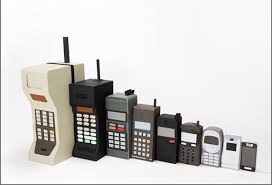It’s a common refrain in senior living that today’s assisted living communities are closer to yesterday’s skilled nursing facilities.
You are here
The more technology changes, the more some categories will remain
 The more things change… Life expectancy is long – tech attention span from investors and innovators can be short. Reviewing the past 10 years of blog posts (from 2008 until 2018), in the beginning, consider the categories and innovations. To mitigate social isolation, for example, note the video phone and the printing mailbox. The objective was to communicate with grandma or grandpa, who might be bereft of email – or for that matter, WiFi, Skype, tablet, smartphone, PC or MAC. Imagine the blissful simplicity or those times -- for the grandparents. Largely forgotten now -- Mailbug, BigKeys – and printing mailboxes Presto and fax-machine based MyCelery. But the PERS market, around since 1975 in the US, has repeatedly been predicted to be obsolete and about to be replaced with something else.
The more things change… Life expectancy is long – tech attention span from investors and innovators can be short. Reviewing the past 10 years of blog posts (from 2008 until 2018), in the beginning, consider the categories and innovations. To mitigate social isolation, for example, note the video phone and the printing mailbox. The objective was to communicate with grandma or grandpa, who might be bereft of email – or for that matter, WiFi, Skype, tablet, smartphone, PC or MAC. Imagine the blissful simplicity or those times -- for the grandparents. Largely forgotten now -- Mailbug, BigKeys – and printing mailboxes Presto and fax-machine based MyCelery. But the PERS market, around since 1975 in the US, has repeatedly been predicted to be obsolete and about to be replaced with something else.
As time passed, how to categorize? Way back, optimistic offerings from innovators took shape into problem-opportunity clusters – mapped out in the first Market Overview in the spring of 2009 (attached to this blog post). There has been plenty of forward motion in the past decade towards the objective of improving or maintaining quality of life. And the sub-topics of categories -- Communication & Engagement, Safety & Security, Health & Wellness, Learning & Contribution – remain as the collective elements of a framework that can make it so.
From a baseline of tech non-use, some saw opportunity. Looking back at the pre-smartphone time, PointerWare and Big Screen Live were two ways to bring computers and email to seniors. The Jitterbug phone was available beginning in 2006, but there were no tablets on the market, and it would be several years before GreatCall (and others) offered a smartphone for seniors in 2012. The iPad was introduced in 2010, and was debated as having senior appeal, according to a 2010 AARP article. Of course, what did the interviewees know? The iPad turned out to be a hit with the elderly – and the bright, shiny glass, as these links demonstrate, was not a deterrent.
…Categories persist, entrants may morph – but not as much as VCs might think. Today, the PERS market heads north past $3 billion in the US. Despite that, some venture capitalists believe that the penetration of smartphone use among seniors, coupled with the ‘potential’ for an all-day smartphone battery means that mobile PERS has a limited future. Just as investors believed before 2009 that PERS could never be used outside the home – oops, wrong, then came MobileHelp. Is there a VC today that thinks that on-the-body, voice-activated PERS (available today), with multiple days of battery life is not a market? There are investors that think the Apple Watch will eliminate the PERS device and its remarkable recurring revenue market. They believe this despite knowing that the Apple watch has $400 price tag and it lacks a call center. And only 20% of boomers and 5% of seniors are buying them.
| Attachment | Size |
|---|---|
| 909.71 KB |
